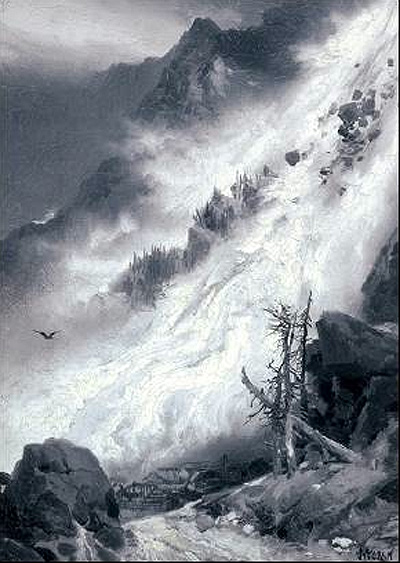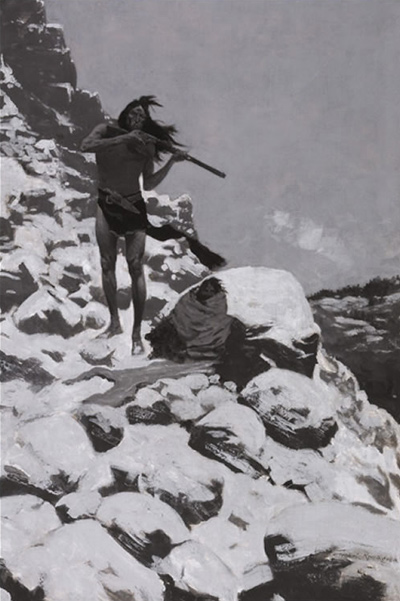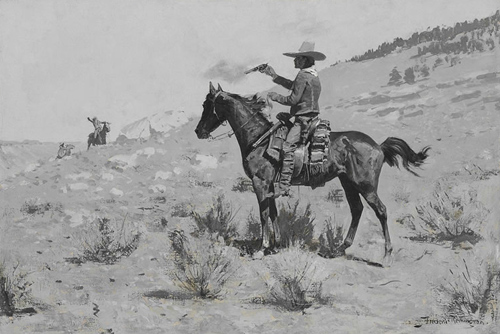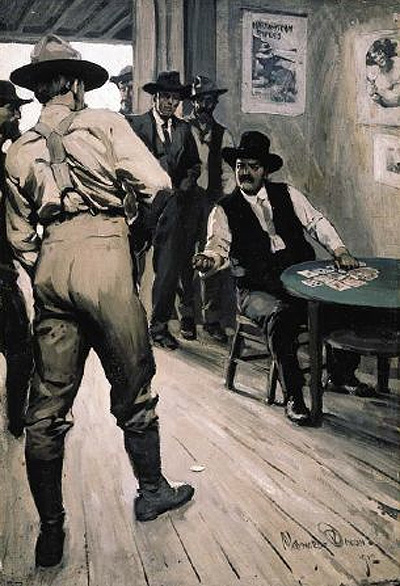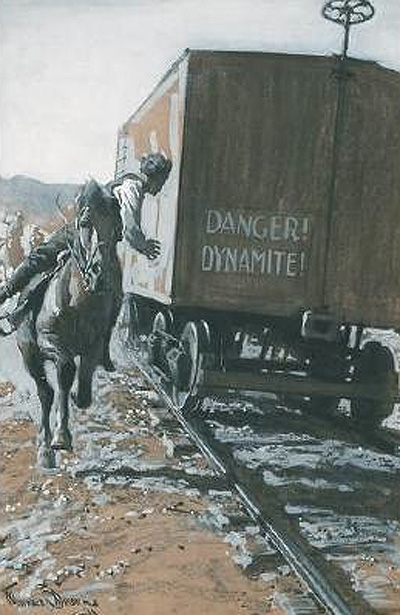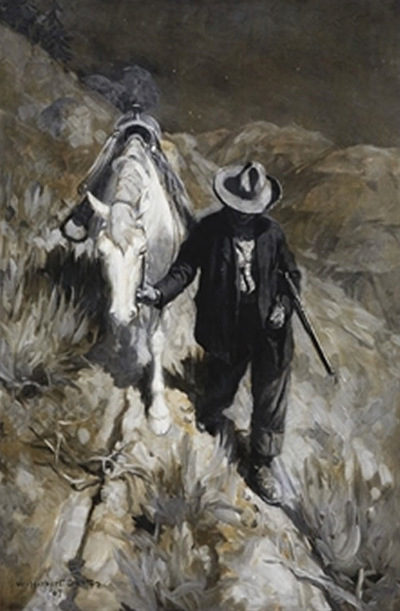Painting of the Day, January 7, 2012
 Saturday, January 7, 2012 at 7:41PM Tweet
Saturday, January 7, 2012 at 7:41PM Tweet By Donna Poulton
Zane Grey “had the knack of tying his characters into the land, and the land into the story. There were other Western writers who had fast and furious action, but Zane Grey was the one who could make the action not only convincing but inevitable, and somehow you got the impression that the bigness of the country generated a bigness of character.” -- Earl Stanley Gardner
 Credit: ebay.comTo accompany the expansive stories of the west penned by Grey, his publisher insisted on using the best illustrators working at the time. Herbert Buck Dunton, a popular artist and illustrator, was hired to illustrate Wanderer of the Wasteland, published in 1923. The hard cover, book jacket, a frontispiece and two illustrations were included by Dunton. W. Herbert “Buck” Dunton was a successful illustrator working for Scribner’s, Harper’s, as well as for Zane Grey. He was a founding member of the Taos Society of Artists and eventually gave up illustrating to concentrate on easel painting.
Credit: ebay.comTo accompany the expansive stories of the west penned by Grey, his publisher insisted on using the best illustrators working at the time. Herbert Buck Dunton, a popular artist and illustrator, was hired to illustrate Wanderer of the Wasteland, published in 1923. The hard cover, book jacket, a frontispiece and two illustrations were included by Dunton. W. Herbert “Buck” Dunton was a successful illustrator working for Scribner’s, Harper’s, as well as for Zane Grey. He was a founding member of the Taos Society of Artists and eventually gave up illustrating to concentrate on easel painting.
 Credit: ebay.com
Credit: ebay.com Credit: ebay.coThe book was made into a movie by Paramount; it was their first feature length technicolor film. This poster, by an unknown illustrator, emphasized the color and drama in both the book and the film.
Credit: ebay.coThe book was made into a movie by Paramount; it was their first feature length technicolor film. This poster, by an unknown illustrator, emphasized the color and drama in both the book and the film.
 Credit: moviepostershop.comYou may also want to browse through previous posts:
Credit: moviepostershop.comYou may also want to browse through previous posts:
 Painting of the Day, November 27, 2011
Painting of the Day, November 27, 2011





